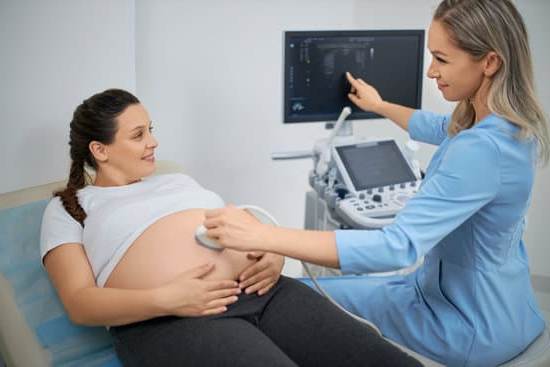Pregnancy is divided into three distinct trimesters, each lasting approximately three months. Understanding the concept of trimesters in pregnancy is crucial for expecting mothers and their partners as they navigate the physical, emotional, and mental changes that come with each stage. The question on many people’s minds is: how long is a trimester in pregnancy? A trimester typically spans around 12-14 weeks, marking significant developmental milestones for both the mother and the growing baby.
During the first trimester, which encompasses weeks 1-12 of pregnancy, women experience a myriad of physical changes and symptoms as their bodies adapt to supporting new life. These early weeks can bring about morning sickness, fatigue, and heightened sense of smell, among other discomforts. On the emotional front, expectant mothers may also grapple with mood swings and anxiety about their changing bodies and future responsibilities.
As pregnancy progresses into the second trimester (weeks 13-26), the focus shifts towards baby development milestones. Expectant parents eagerly await feeling those first kicks and movements from within as their little one grows rapidly. Meanwhile, mothers may notice changes in their own bodies such as increased energy levels and a growing appetite. It’s a time of excitement as the pregnancy becomes more visible and tangible for all involved parties.
First Trimester
The first trimester of pregnancy, lasting from weeks 1 to 12, is a crucial period characterized by significant physical changes and symptoms as the body prepares for the baby’s growth and development. During this time, many women may experience early signs of pregnancy such as fatigue, nausea (commonly referred to as morning sickness), breast tenderness, and frequent urination. These symptoms can vary in intensity from woman to woman and can greatly impact daily life.
Hormonal Changes
One of the key factors contributing to the physical changes and symptoms in the first trimester is the surge in hormonal levels, particularly human chorionic gonadotropin (hCG) and progesterone. These hormones play vital roles in supporting the pregnancy and preparing the body for childbirth. The increase in hCG is responsible for triggering pregnancy tests to turn positive while progesterone helps maintain the uterine lining to support fetal growth.
Body Adjustments
Aside from hormonal changes, the body also undergoes various adjustments during the first trimester. The uterus begins to expand to accommodate the growing fetus, leading to feelings of fullness or bloating in the abdominal area. Women may also notice changes in their skin, such as acne breakouts or darkening of the areolas. Additionally, weight gain can start during this period due to increased blood volume and fluid retention.
As women navigate through these physical changes and symptoms during the first trimester of pregnancy, it is essential to prioritize self-care and seek medical advice when needed. Ensuring proper nutrition, hydration, rest, and prenatal care can help optimize maternal health and support the well-being of both mother and baby throughout this transformative stage of gestation.
First Trimester
During the first trimester of pregnancy, expectant mothers experience a myriad of physical changes and symptoms as their body adjusts to the growing fetus. However, it is important not to overlook the emotional aspects and mental health considerations that also play a crucial role during this time.
Many women may find themselves dealing with a range of emotions, from excitement and joy to anxiety and fear. It is important for women to understand that these emotional fluctuations are normal and part of the pregnancy journey.
Emotional Rollercoaster: Coping With Mood Swings
One common experience during the first trimester is mood swings, which can be attributed to hormonal changes in the body. Women may find themselves feeling on top of the world one moment and in tears the next.
To cope with these emotional ups and downs, it is essential for pregnant women to communicate their feelings with their partner, friends, or healthcare provider. Engaging in relaxation techniques such as deep breathing, meditation, or prenatal yoga can also help manage stress levels and promote emotional well-being.
Mental Health Support: Seeking Help When Needed
Pregnancy can bring about unique mental health challenges such as anxiety, depression, or even past trauma resurfacing. It is important for expectant mothers to seek professional help if they feel overwhelmed by negative emotions or if their mental health starts to impact their daily life.
Counseling, therapy, or support groups specifically tailored for pregnant women can offer valuable tools and coping strategies to navigate through these emotional hurdles. Remember that taking care of your mental health is just as important as taking care of your physical health during pregnancy.
Second Trimester
During the second trimester of pregnancy, which lasts from week 13 to week 26, remarkable development milestones occur in the growing baby. Here are some key stages that parents can expect during this stage:
- Weeks 13-16: By around week 14, the baby’s organs are beginning to function and their bones are becoming harder. At this point, the gender may also be determined through an ultrasound.
- Weeks 17-20: The baby’s movements become more noticeable to the mother as they develop a regular sleeping pattern. By week 20, the baby is covered in vernix caseosa, a protective layer on their skin.
- Weeks 21-26: The baby’s senses start developing around this time – they can hear sounds from the outside world and may even respond to touch or light. By week 24, their lungs begin producing surfactant which helps them breathe outside the womb.
As these significant changes take place in the baby during the second trimester, it is essential for both parents to ensure proper prenatal care and monitoring by healthcare providers. Regular ultrasounds and check-ups help track the baby’s growth and development, providing a valuable insight into their well-being.
Overall, the second trimester is often considered one of the most enjoyable phases of pregnancy for many women. With morning sickness typically decreasing and energy levels improving, this period allows expectant mothers to appreciate the beauty of carrying new life within them while witnessing miraculous milestones in their baby’s development.
Second Trimester
During the second trimester of pregnancy, which typically spans from weeks 13 to 26, expecting mothers may experience a variety of physical and emotional changes. One of the most notable transformations during this time is the visible growth of the baby bump as the uterus expands to accommodate the growing fetus.
Many women also report feeling an increase in their energy levels during the second trimester, often referred to as the “honeymoon phase” of pregnancy due to reduced feelings of nausea and fatigue that are common in the first trimester.
In addition to physical changes, pregnant individuals may also notice shifts in their appetite and cravings during the second trimester. Some women find themselves experiencing intense food aversions or cravings for specific foods they previously did not enjoy.
It is essential to listen to your body’s signals and consume a balanced diet rich in nutrients necessary for you and your baby’s health. Consulting with a healthcare provider can help ensure that you are meeting your nutritional needs during this critical stage of pregnancy.
As the baby continues to grow and develop important milestones such as kicking movements become more pronounced during the second trimester. Expecting parents may also have opportunities for bonding through ultrasound appointments where they can see their little one’s features more clearly. Alongside these exciting developments, it is crucial for pregnant individuals to prioritize self-care practices and maintain open communication with their healthcare providers about any concerns or changes they may be experiencing.
Third Trimester
The third trimester of pregnancy, spanning from weeks 27 to 40, is a crucial time for both the mother and the baby as they prepare for labor and delivery. During this period, the baby experiences significant growth and development, getting ready to enter the world. The mother’s body continues to undergo various changes to support the growing fetus and prepare for childbirth.
One of the key milestones in the third trimester is the continued growth and maturation of the baby’s organs, especially the lungs. By week 36, the baby’s lungs are usually fully developed, increasing their chances of survival if they were to be born prematurely. Additionally, during this period, the baby tends to gain more weight rapidly as they accumulate fat stores needed for temperature regulation after birth.
As the due date approaches, many expecting mothers may experience a mix of excitement and anxiety about labor and delivery. It is common for women in their third trimester to attend childbirth classes or workshops to learn about the birthing process, pain management techniques, and relaxation methods. This preparation helps ease some of the uncertainties surrounding childbirth and empowers mothers to make informed decisions about their preferences during labor.
| Third Trimester Development | Key Milestones |
|---|---|
| Baby’s Lung Development | By week 36, baby’s lungs are usually fully developed. |
| Baby’s Weight Gain | The baby gains weight rapidly in preparation for birth. |
Third Trimester
During the third trimester of pregnancy, which typically spans from week 27 to week 40, many women experience a variety of common discomforts as their bodies continue to adapt to the growing baby and prepare for labor and delivery. Understanding these discomforts can help expectant mothers better cope with them and seek appropriate support when needed.
Some of the most common discomforts during the third trimester include:
- Increased frequency of urination: As the baby grows larger, pressure on the bladder intensifies, leading to more frequent trips to the bathroom.
- Back pain: The extra weight gained during pregnancy can strain the lower back, causing discomfort for many women.
- Swelling: Swollen ankles, feet, and hands are common due to increased fluid retention in the body.
Managing these discomforts often involves a combination of lifestyle adjustments, such as staying hydrated, maintaining good posture, and practicing gentle exercises like prenatal yoga or swimming. Additionally, consulting with healthcare providers about safe pain relief options or seeking physical therapy can also provide relief for some women.
It is important for expectant mothers in their third trimester to prioritize self-care and listen to their bodies. Adequate rest, proper nutrition, and ongoing communication with healthcare providers can help manage these discomforts effectively. By understanding what is normal during this stage of pregnancy and seeking support when needed, women can navigate the third trimester more comfortably.
Comparing Trimester Lengths in Different Cultures and Medical Practices
Trimesters in pregnancy are a universal concept, but the specific lengths of each trimester can vary depending on cultural practices and medical traditions. In most Western medical communities, a trimester is typically defined as a period of approximately three months, totaling up to nine months (or 40 weeks) of pregnancy. However, it is important to note that some cultures and healthcare systems may have slightly different interpretations of trimester lengths.
For example, in some Asian countries like Japan and South Korea, there is a belief that the first trimester lasts for 12 weeks but is followed by a “zero month” or “month zero,” making their total duration of pregnancy 10 months instead of nine. This distinction can lead to differences in how pregnancies are monitored and treated throughout the gestation period.
In Islamic culture, the length of a trimester is often calculated based on lunar months rather than the typical Gregorian calendar months used in Western societies. This can result in subtle variations in how milestones are measured during pregnancy and childbirth. These cultural differences highlight the importance of understanding diverse perspectives when it comes to tracking pregnancy progress and preparing for labor and delivery.
| Cultural Perspective | Trimester Length |
|---|---|
| Western Medical Communities | 3 months per trimester |
| Asian Cultures (e.g. Japan, South Korea) | 10 months total with a “month zero” |
| Islamic Tradition | Vary based on lunar months |
Conclusion
In conclusion, understanding the concept of trimesters in pregnancy is crucial for expecting parents to monitor the progress of both the baby’s development and the mother’s health. Each trimester plays a unique role in the pregnancy journey, with distinct physical, emotional, and mental changes occurring throughout. By knowing how long each trimester lasts and what to expect during that time, individuals can better prepare themselves for the challenges and joys that come with each stage.
During the first trimester, which typically lasts from weeks 1-12, women may experience a variety of physical symptoms such as morning sickness and fatigue. Understanding these changes can help mothers-to-be navigate this period with more ease and seek appropriate care if needed. Likewise, being aware of the emotional aspects and mental health considerations during this time can contribute to a healthier pregnancy overall.
As the pregnancy progresses into the second trimester (weeks 13-26) and then into the third trimester (weeks 27-40), tracking milestones in baby development becomes increasingly important. Additionally, staying informed about changes in the mother’s body, energy levels, and appetite is essential for maintaining a healthy balance throughout each trimester.
By comparing trimester lengths across different cultures and medical practices, it becomes evident that the universal significance of monitoring these stages remains constant in ensuring a successful outcome for both mother and child.
Frequently Asked Questions
What Are the 3 Trimester of Pregnancy?
Pregnancy is divided into three trimesters, each lasting about 3 months. The first trimester spans from week 1 to week 12, the second trimester goes from week 13 to week 26, and the third trimester covers week 27 until childbirth.
Which Trimester Is the Most Critical?
The first trimester is often considered the most critical stage of pregnancy because this is when vital organs are forming in the fetus. It is during this time that major developmental milestones are reached, making it crucial for overall fetal health.
How Long Is a Trimester During Pregnancy?
Each trimester of pregnancy typically lasts around 3 months. This means the entire pregnancy journey lasts approximately 9 months or 40 weeks from conception to childbirth. The duration of each trimester serves as a convenient way to track the progress of pregnancy and fetal development.

Welcome to my fertility blog. This is a space where I will be sharing my experiences as I navigate through the world of fertility treatments, as well as provide information and resources about fertility and pregnancy.





